What does the future of automotive retail look like?
Digital Transformation
As the digital disruptors change the shape of the used car sector and help to accelerate the move to online retail, emulating their approach may not be a choice, but more of a necessity.
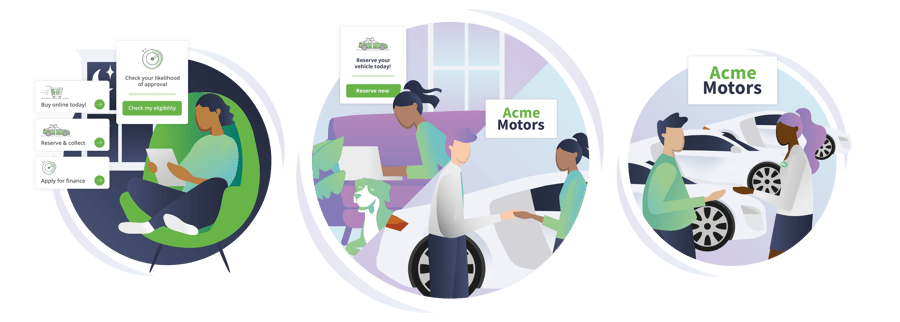
Because of the increased competition the industry is going to face over the next few years, the question facing retailers might actually be – Can you afford not to be a disruptor?
The arrival of digital disruptors is going to change consumer expectations about online purchasing, and their marketing spend will affect customer perceptions about buying vehicles online.
Their sheer presence can look daunting to the established market, but the right technology partner, the right car dealership software, and the right motor finance software can help traditional vehicle retailers compete in the changing automotive landscape.
The traditional linear approach to selling online – something iVendi calls online retail 1.0 – is a great solution for simple transactions. But buying a car, van or motorbike is a complex process; a multi-layered deal with additional extras, financing, part-exchange and negotiable pricing to contend with. This requires sophisticated car dealership software which incorporates a car dealer website and dealership management system.
The best car dealership software tools can do far more than simply replace face-to-face interaction. They enhance the buying journey with functionality that compliments the showroom experience, making it easier for buyers to find the vehicles they’re looking for, assess their finance options and progress through the purchase journey digitally. Retailers operate more efficiently, attract a wider audience, and offer their customers a flexible and streamlined approach.
Many retailers have found that their digital offering is simply not capable of delivering what modern buyers expect. But the technology to offer a blended approach, where customers can move at their own pace and comfort online before switching to an in-person transaction, is available and is more affordable than many dealers might realise.
The acceleration toward transacting digitally in many areas of life has brought about a more diverse customer base for vehicle retailers. Having car dealership software that works just as well online as it does in the showroom is vital to the success of motor retailers.
Many consumers are willing and ready to buy, or at least begin the buying process, online. But a significant proportion of buyers still want to see, sit in and test drive a vehicle ahead of purchase.
The buying market can be split into three main groups – online buyers, in-person buyers and channel hoppers – with customer volumes gently drifting in the digital direction.
Online buyers are characterised as a younger audience, although older customers are quickly growing in confidence too. These shoppers are confident enough to go through the entire journey online with no interaction from the retailer.
In-person buyers still want to see a vehicle in the metal and test drive before committing to a purchase. They rely on the traditional showroom shopping experience, and use little to no online tools to inform or aid their purchase decision.
Typically, these buyers will take the longest path to conversion and come with the highest operational cost to your business.
The biggest group are the channel hoppers. These buyers will dip in and out of the digital journey, switching from online to showroom throughout. They are happy to research and potentially begin their purchase journey online and engage with digital tools to educate themselves on their potential purchase. Channel hoppers will progress quite far down the sales funnel online, even applying for finance, but at some point they will require assistance or reassurance from the dealer.
The growing number of buyers who will switch between digital and physical sales journeys at different points along the route incentivises retailers to have car dealership software that’s both flexible and smart. The transition point between the online and physical channels is where potential buyers can be lost, especially if the technology doesn’t seamlessly ease them across. A connected retailing experience that can adapt to the needs of the consumer will inspire confidence and offer a journey suitable for all your customers, no matter how they want to buy.
High-profile digital disruptors and new car manufacturers are helping breed consumer confidence in buying online.
The likes of Tesla, Polestar and Genesis are comparatively new car brands to the UK market, but all deploy a primarily online approach, supported by a network of ‘pop-up’ showrooms, rather than the traditional brick and mortar dealership.
At the same time, the rise of online-first new and used car retailers like Cazoo and Cinch – and the massive marketing budgets they have at their disposal - have changed the way consumers think about online vehicle purchasing.
Changes to consumer behaviour during the pandemic only accelerated their growth, and helped them gain a significant amount of market share, with approximately 10% of consumers now willing to buy a car entirely online.
This all works to normalise online vehicle retailing and gives credibility that filters across the entire sector, enough that even established brands like Volvo have adopted an online-first approach for certain vehicles.
After decades of relatively little change, automotive retail is finally adopting the digital tools it needs to provide modern consumers with the retail experience they’ve come to expect.
Significant changes have already started happening that have accelerated digital adoption across the industry. Primarily fuelled by OEM activity, the role of the physical dealership in the vehicle sales process has begun to change.
The introduction of agency models, where the OEM takes ownership of the retail process of selling directly to the consumer and where the dealer becomes the physical touchpoint for the customer, arranging handovers and servicing, is fast approaching.
This change is happening in response to new consumer expectations. 80% of consumers want a simplified buying process, and OEM’s want direct access to the consumer with more control of the overall sales process.
As the industry continues to change, retailers need to adopt and drive change in their businesses in order to meet consumer expectations, or risk missing out on a shifting consumer base.
A recent white paper we published took a look at the new approaches to vehicle retail.
In the paper, we identified the three types of buyers who now exist in the changing retail environment.
Buyers have manifested themselves into three distinct groups:
Online Buyers / Channel Hoppers / In-Person Buyers
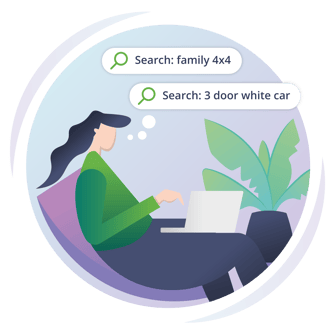
Online Buyers
Buyers who complete the entire buying process online, from research to delivery.
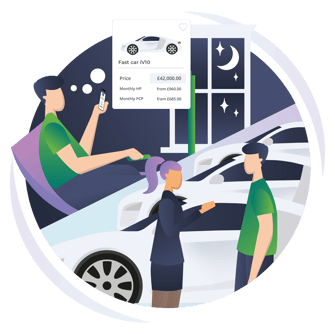
Channel Hoppers
Buyers who begin the buying process online, but switch to a showroom experience at various points, preferring to be guided through the final stages of a sale.

In-Person Buyers
The in-person buyer starts and ends the shopping experience entirely in the showroom. This group takes the longest time to go from research to purchase.
Regardless of the type of buyer, consumers all expect a seamless buying experience, retailers need to adapt and evolve their processes to meet consumer needs.
Our paper also took a look at how businesses can approach vehicle retail and identified four distinct models.
Pure Online
Order completed without analogue communication (voice or paper). Lowest operational cost.
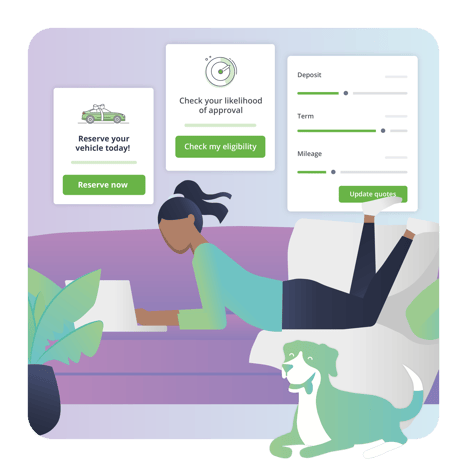
Online & Concierge
Initial deal stacked online. Order completed with support from remote 'concierge'.
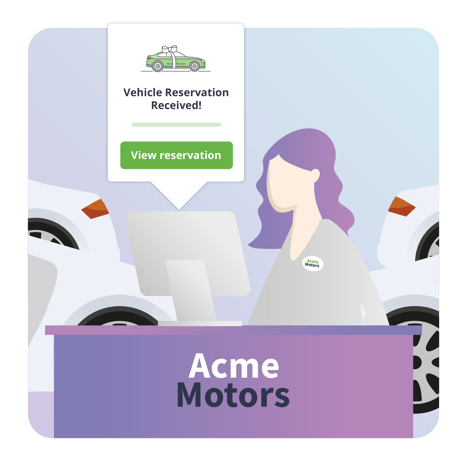
Hybrid/Blended
Deal initialised or finalised remotely, but touchpoints such as test drives, part exchange, valuations, and negotiations happen in person.
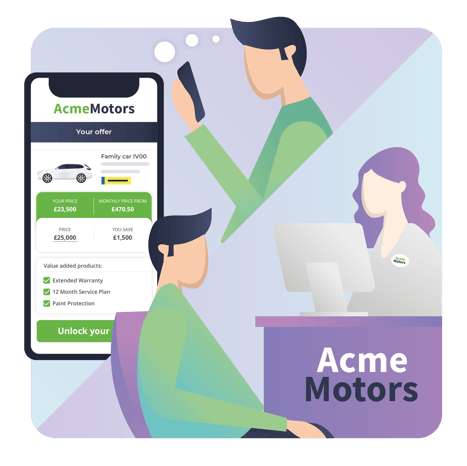
Offline Sales
Deal structured and finalised during showroom visits. Highest operational cost.
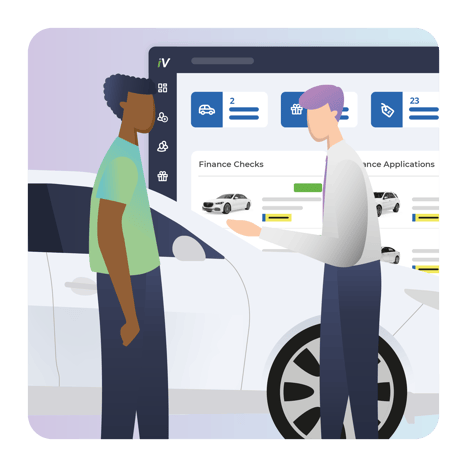
Three of the four models rely on some form of online interaction between the consumer and retailer, which illustrates the need for car dealership software that can cater to the needs of all three.
Our data shows peak times for browsing car dealer websites tend to be in the early evening, with the busiest hours being between 6 and 10 pm, when people have finished the workday, and more importantly when showrooms are closed.
This is in stark contrast to what we found when looking at the busiest hours for online consumer motor finance applications, which peak between the hours of 9 and 5 pm.
The data clearly illustrated the need for a blended and connected solution. One that uses the power of car dealer websites to capture valuable traffic from interested buyers at peak browsing times, and also caters to buyers once they transition into a physical shopping experience.
Dealers or motor finance providers that consider themselves primarily digital-only or showroom-only will narrow themselves into the niche market extensions of retailing going forward.
With buyer expectation and the fundamental simplicity of the transaction becoming key to a more mixed approach.
While the online journey makes the purchase simpler in many ways for both consumer and retailer, the increased flexibility does make for some complications that technology needs to address.
According to iVendi research, 72% of vehicle sales require complex negotiation of some sort, be that part-exchange, negative equity, value added products or other complications. Retailers need to be able to deal with these equally easily in person or digitally.
Over 90% of buyers now rely on online search before making a purchase decision, and the internet has become the place where most consumers begin the vehicle buying journey. Your website is where consumers will first interact with your brand.
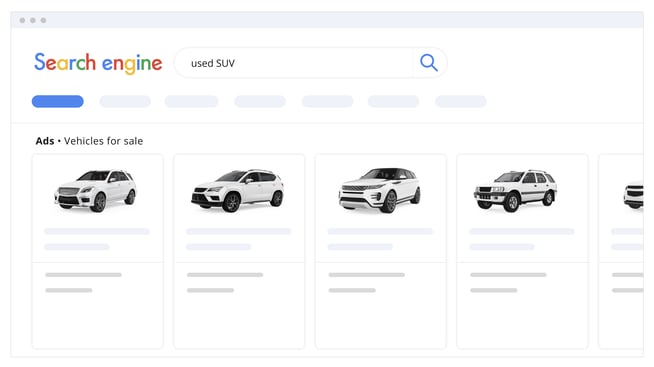
Before a retailer can even connect with a potential online customer, the basics need to be in place to enable a route of research, decision, and purchase. To maintain profitability while trading remotely, businesses need to be flexible and offer the right process and routes to market for the right customer at the right time on their car dealer websites.
Good digital tools allow the buying journey to take place at a time that suits the buyer, offering what the buyer wants, when they want it. But that doesn’t mean retailers lose control of the sales process.
Clever retailers use car dealership software to take a proactive approach to remote sales, using tools that enable them to encourage buyers to take the next steps.
The ability to build a proposition that includes a combination of price, part-exchange, finance, upgraded warranties, and other value-added products to meet the buyer's specific needs provides more flexibility to modern vehicle retail.
A deal the customer can review, alter, and confirm at their own pace is a constructive step towards the future of vehicle retail.
Combining the digital and physical sales journey to suit the customer's trading preferences unlocks a host of benefits for the retailer.
Learn how the right technology can help you adapt to the changing automotive landscape
New technologies are changing the way vehicles are bought & sold. To help retailers, lenders and manufacturers create the best buying journeys to cater to all buyers, our industry experts share their specialised knowledge and insights to provide you with in-depth information on everything you need to know about digital transformation in the automotive sector.


